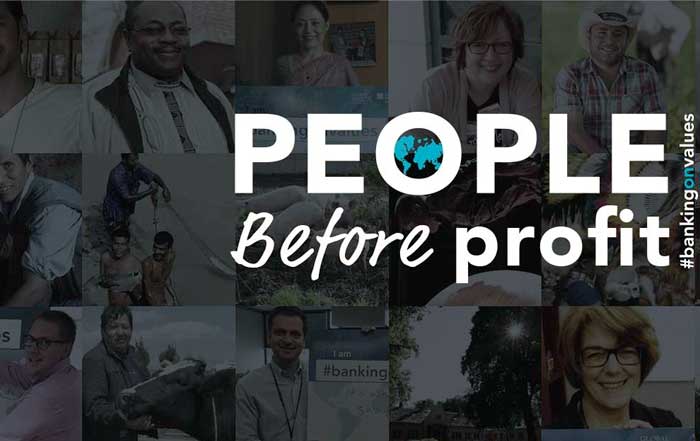Sustainable banking, a practice integrating environmental, social, and governance (ESG) principles into financial services, has emerged as a transformative force in the global financial landscape. Its role transcends traditional banking, focusing on addressing the pressing challenges of climate change, biodiversity loss, and social inequality. Banks adopting sustainable practices prioritize financing projects that contribute to environmental conservation, renewable energy development, and equitable socio-economic growth. This approach underscores a pivotal shift in how financial institutions perceive their responsibility, moving from profit-centric operations to a more balanced, stakeholder-inclusive model.
The significance of sustainable banking lies in its ability to influence markets and reshape economic priorities. By reallocating capital toward green initiatives, banks can catalyze the transition to a low-carbon economy, ensuring financial stability while supporting broader societal goals. As the world grapples with the consequences of unsustainable practices, the financial sector's commitment to sustainability has become indispensable for fostering a resilient and inclusive future.
Defining Green Projects and Their Economic Importance
Green projects, encompassing renewable energy installations, sustainable agriculture, energy-efficient infrastructure, and biodiversity conservation programs, represent critical pathways for mitigating environmental degradation. These initiatives often require substantial investment, making access to sustainable financing crucial. Banks play a central role in bridging the gap between project developers and capital, offering innovative financial instruments tailored to the unique requirements of environmentally focused ventures.
The economic importance of green projects cannot be overstated. Investments in renewable energy, for instance, not only reduce dependency on fossil fuels but also create jobs, stimulate technological innovation, and enhance energy security. Similarly, funding climate-resilient infrastructure ensures communities are better equipped to withstand natural disasters, reducing economic losses and safeguarding livelihoods. By financing these endeavors, sustainable banks enable a positive feedback loop where environmental preservation drives economic growth, which in turn attracts further investment.
The Evolution of Sustainable Banking Practices
The concept of sustainable banking has evolved significantly over the past few decades. Initially considered a niche approach, it gained momentum as global awareness of environmental and social challenges intensified. The adoption of frameworks such as the United Nations’ Principles for Responsible Banking (PRB) and the Equator Principles provided a structured foundation for integrating ESG considerations into banking operations.
Early pioneers in sustainable banking, such as Triodos Bank and ASN Bank, demonstrated the viability of aligning profitability with purpose. Their success inspired larger financial institutions to adopt similar practices, driven by stakeholder demands and regulatory pressures. Today, sustainable banking encompasses a wide range of activities, including green bonds, ESG-linked loans, carbon offset financing, and sustainability-linked derivatives. These instruments enable banks to offer tailored solutions that incentivize sustainable practices among borrowers.
Key Drivers Behind the Growth of Sustainable Banking
Several factors have contributed to the rising prominence of sustainable banking:
Regulatory Support: Governments and international organizations have introduced policies encouraging financial institutions to prioritize sustainability. Initiatives such as the European Green Deal and the Task Force on Climate-related Financial Disclosures (TCFD) underscore the regulatory emphasis on sustainable finance.
Investor Demand: Institutional investors increasingly seek ESG-compliant portfolios, recognizing the long-term value of sustainable investments. This trend has prompted banks to integrate ESG metrics into their risk assessment and product offerings.
Technological Advancements: Digital technologies enable efficient tracking and reporting of ESG metrics, making sustainable banking more transparent and scalable. Innovations like blockchain also facilitate green financing by ensuring traceability of funds.
Market Opportunities: The transition to a green economy presents lucrative opportunities, with sectors such as renewable energy, electric mobility, and sustainable agriculture experiencing exponential growth.
Reputation and Risk Management: Embracing sustainability enhances a bank's reputation while mitigating risks associated with climate change, regulatory non-compliance, and societal backlash.
Financial Instruments for Green Projects
Sustainable banks employ a variety of financial instruments to support green projects. These tools are designed to meet the specific needs of environmentally focused ventures while offering attractive returns to investors.
Green Bonds
Green bonds are debt securities issued to finance projects with environmental benefits. They have become one of the most popular instruments for sustainable financing, attracting a diverse range of investors. These bonds provide capital for renewable energy installations, energy-efficient buildings, and clean transportation projects.
ESG-Linked Loans
ESG-linked loans incentivize borrowers to achieve specific sustainability targets by offering lower interest rates. This alignment of financial benefits with environmental goals encourages businesses to adopt greener practices.
Sustainability-Linked Derivatives
These derivatives enable companies to hedge financial risks while linking payments to ESG performance. They represent an innovative approach to integrating sustainability into risk management.
Carbon Offset Financing
Banks offering carbon offset financing support projects that reduce or remove greenhouse gas emissions. These initiatives include reforestation programs, methane capture technologies, and renewable energy development.
Impact Investing Funds
Impact investing funds allocate capital to ventures generating measurable social and environmental benefits alongside financial returns. These funds cater to investors seeking purpose-driven investment opportunities.
Evolution of Sustainable Banking
Challenges Facing Sustainable Banking
Despite its potential, sustainable banking faces several challenges that must be addressed to unlock its full impact.
Limited Awareness and Expertise
Many financial institutions lack the expertise required to assess the viability of green projects or evaluate their ESG impact. This knowledge gap hinders the effective deployment of sustainable financing.
Inconsistent ESG Standards
The absence of universally accepted ESG standards complicates the integration of sustainability into banking practices. Divergent frameworks make it difficult for banks to evaluate and compare projects, leading to inefficiencies.
High Initial Costs
Green projects often involve significant upfront costs, which can deter investment. Sustainable banks must develop innovative financing models to address this barrier.
Risk Perception
Perceived risks associated with green projects, such as technological uncertainties or regulatory changes, may limit their attractiveness to investors. Banks need to employ comprehensive risk assessment frameworks to build confidence.
Balancing Profitability and Purpose
While sustainability is a priority, banks must ensure their green initiatives remain financially viable. Striking this balance requires careful planning and execution.
Case Studies: Success Stories in Sustainable Banking
Triodos Bank
Triodos Bank, a pioneer in sustainable banking, has financed numerous green projects across Europe. Its investments in renewable energy, organic farming, and social enterprises highlight the transformative potential of aligning finance with purpose.
HSBC’s Green Bond Initiative
HSBC’s issuance of green bonds to fund renewable energy projects demonstrates how mainstream banks are embracing sustainability. These bonds have supported solar, wind, and hydroelectric power installations globally.
DBS Bank’s Sustainable Finance Framework
DBS Bank’s adoption of a comprehensive sustainable finance framework has enabled it to finance diverse green projects, from energy-efficient infrastructure to biodiversity conservation.
The Future of Sustainable Banking
The future of sustainable banking hinges on continued innovation, collaboration, and commitment. Financial institutions must harness technological advancements, such as artificial intelligence and blockchain, to enhance transparency and efficiency. Collaboration between banks, governments, and non-profit organizations will be essential to scaling green initiatives and addressing systemic challenges.
Furthermore, the integration of sustainability into core banking operations will evolve from being a competitive differentiator to a fundamental requirement. Banks that fail to adapt risk losing relevance in an increasingly ESG-focused market. By embedding sustainability into their DNA, financial institutions can not only drive positive change but also secure their long-term success.
Conclusion
Sustainable banking represents a paradigm shift in the financial sector, prioritizing environmental stewardship and social equity alongside profitability. Its role in financing green projects is critical for advancing global sustainability goals and building a resilient economy. As challenges are addressed and opportunities realized, sustainable banking will continue to redefine the relationship between finance and the planet. By championing green initiatives, financial institutions have the power to shape a future where economic prosperity and environmental conservation coexist harmoniously.
For more insights into sustainable banking, visit Principles for Responsible Banking, explore Green Bonds by ICMA, or learn from the Global Alliance for Banking on Values.










